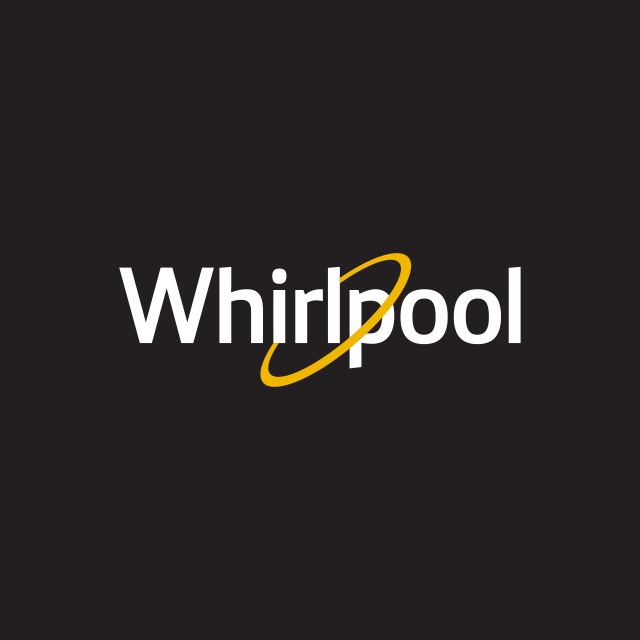Анализ компании Whirlpool
1. Резюме
Плюсы
- Дивиденды (7.06%) больше среднего по сектору (1.37%).
- Текущая эффективность компании (ROE=20.36%) выше чем в среднем по сектору (ROE=11.38%)
Минусы
- Цена (93.83 $) выше справедливой оценки (86.61 $)
- Доходность акции за последний год (-16.39%) ниже чем средняя по сектору (-5.8%).
- Текущий уровень задолженности 41.77% увеличился за 5 лет c 30.56%.
Похожие компании
2. Цена акции и эффективность
2.1. Цена акции
2.2. Новости
14 августа 15:25 Новым гендиректором Electrolux станет Янник Фирлинг
2.3. Рыночная эффективность
| Whirlpool | Consumer Discretionary | Индекс | |
|---|---|---|---|
| 7 дней | -0.7% | -19% | 1.2% |
| 90 дней | -19.5% | -11.1% | -5.2% |
| 1 год | -16.4% | -5.8% | 9.5% |
WHR vs Сектор: Whirlpool значительно отстал от сектора "Consumer Discretionary" на -10.6% за последний год.
WHR vs Рынок: Whirlpool значительно отстал от рынка на -25.91% за последний год.
Стабильная цена: WHR не является значительно более волатильным чем остальная часть рынка на "New York Stock Exchange" за последние 3 месяца, типичные отклонения в пределах +/- 5% в неделю.
Длительный промежуток: WHR с недельной волатильностью в -0.3153% за прошедший год.
3. Резюме по отчету
4. Фундаменальный анализ
4.1. Цена акции и прогноз цены
Выше справедливой цены: Текущая цена (93.83 $) выше справедливой (86.61 $).
Цена выше справедливой: Текущая цена (93.83 $) выше справедливой на 7.7%.
4.2. P/E
P/E vs Сектор: Показатель P/E компании (13.67) ниже чем у сектора в целом (34.01).
P/E vs Рынок: Показатель P/E компании (13.67) ниже чем у рынка в целом (73.05).
4.2.1 P/E Похожие компании
4.3. P/BV
P/BV vs Сектор: Показатель P/BV компании (2.59) ниже чем у сектора в целом (3.84).
P/BV vs Рынок: Показатель P/BV компании (2.59) ниже чем у рынка в целом (22.32).
4.3.1 P/BV Похожие компании
4.4. P/S
P/S vs Сектор: Показатель P/S компании (0.338) ниже чем у сектора в целом (3.02).
P/S vs Рынок: Показатель P/S компании (0.338) ниже чем у рынка в целом (15.91).
4.4.1 P/S Похожие компании
4.5. EV/Ebitda
EV/Ebitda vs Сектор: Показатель EV/Ebitda компании (8.58) ниже чем у сектора в целом (49.26).
EV/Ebitda vs Рынок: Показатель EV/Ebitda компании (8.58) ниже чем у рынка в целом (23.05).
5. Доходность
5.1. Доходность и выручка
5.2. Доход на акцию - EPS
5.3. Прошлая доходность Net Income
Тренд доходности: Отрицательный и за последние 5 лет упал на -11.09%.
Ускорение доходности: Доходность за последний год (0%) превышает среднюю доходность за 5 лет (-11.09%).
Доходность vs Сектор: Доходность за последний год (0%) превышает доходность по сектору (-47.7%).
5.4. ROE
ROE vs Сектор: Показатель ROE компании (20.36%) выже чем у сектора в целом (11.38%).
ROE vs Рынок: Показатель ROE компании (20.36%) ниже чем у рынка в целом (25.12%).
5.5. ROA
ROA vs Сектор: Показатель ROA компании (2.78%) ниже чем у сектора в целом (7.75%).
ROA vs Рынок: Показатель ROA компании (2.78%) ниже чем у рынка в целом (6.65%).
5.6. ROIC
ROIC vs Сектор: Показатель ROIC компании (16.14%) выже чем у сектора в целом (8.22%).
ROIC vs Рынок: Показатель ROIC компании (16.14%) выже чем у рынка в целом (9.31%).
7. Дивиденды
7.1. Дивидендная доходность vs Рынок
Высокая див доходность: Дивидендная доходность компании 7.06% выше средней по сектору '1.37%.
7.2. Стабильность и увеличение выплат
Стабильность дивидендов: Дивидендная доходность компании 7.06% стабильно платится на протяжении последних 7 лет, DSI=1.
Слабый рост дивидендов: Дивидендный доход компании 7.06% слабо или не растет за последние 5 лет. Рост на протяжении только 0 лет.
7.3. Процент выплат
Покрытие дивидендами: Текущие выплаты из доходов (79.83%) находятся на комфортном уровне.
Оплатите подписку
Больше функциональности и данных для анализа компаний и портфеля доступно по подписке





